VPS & Dedicated Hosting: Managing Users
Overview
This article will explain creating and managing users on Dedicated or VPS servers. To begin, you will need to log in to WHM. If you have not done this before, please see Log in to WHM.
- Create an account
- Log in to the account
- Change an account's password
- Modify an account
- Delete an account
Create an account
- At the top left of the page, type Create into the search bar.
- In the search results, click on Create a New Account.
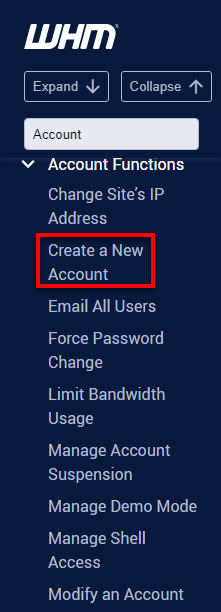
- Under Domain Information, enter the following information:
- Domain: The primary domain for this account.
- Username: The name used when logging into the account.
- Password: The password used when logging into the account.
- Re-type Password: Type the password again to ensure accuracy.
- Email: The contact email for the person using the account.
- Under Package, choose the package of options you want this account to have or select Choose Options Manually to be given a list of options you can add to this account.
- Under Settings, choose either the Jupiter theme.
Note: Do not choose the Bluehost theme. This theme does not work on any account but your main Bluehost cPanel. - You may adjust the other settings if you feel comfortable doing so. For all others, it is recommended to leave them at the defaults.
- At the bottom of the page, click the Create button.
Finally, you will be shown a page that will confirm the account was created.
Log in to the account
Logging in as the User
- Go to domain.com/cpanel in your browser.
Note: replace domain.com with a domain that points to your server or your server's IP address. - Enter the username and password.
- Click the Log in button.
You will be taken to the cPanel for the account you logged in with.
Using the WHM
- In the top left of the WHM, type the list into the search.
- In the search results, click on List Accounts.
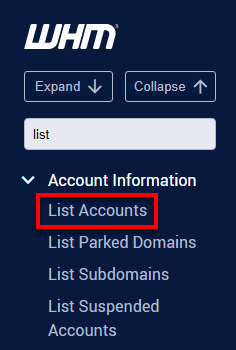
- On the list of accounts, click the cPanel icon for the account you wish to log in to.
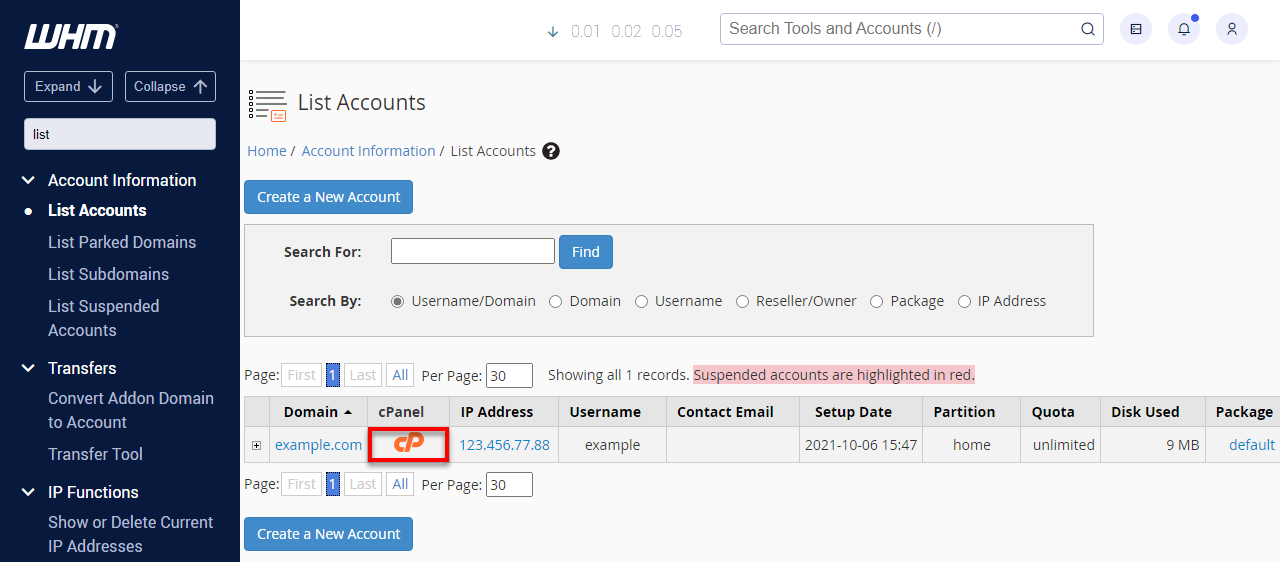
You will be taken to the cPanel for the account you logged in with.
Change an account's password
- In the top left of the WHM, type the list into the search.
- In the search results, click on List Accounts.
- Click the + symbol next to the account you would like to change..

- Enter the new password in the Change Password field and click the Change button.
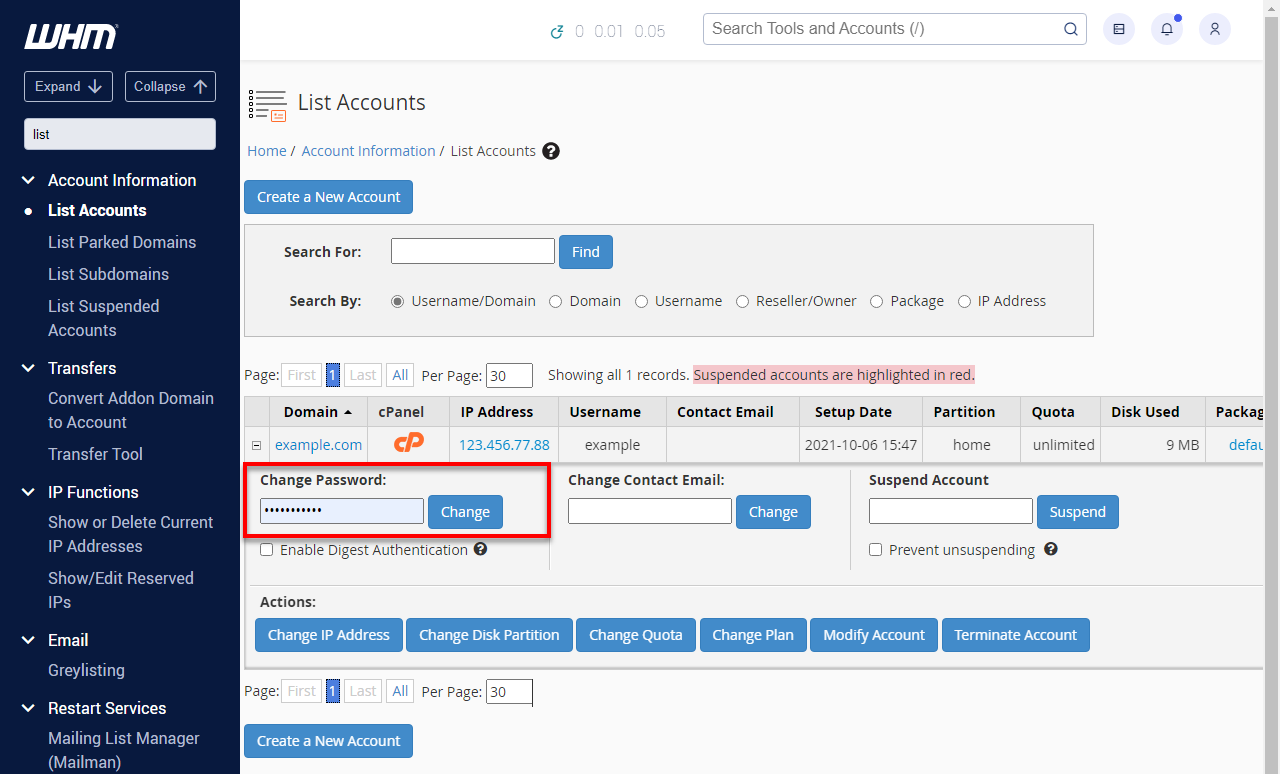
- You should be given a page confirming the change.
Modify an account
- In the top left of the WHM, type modify into the search.
- In the search results, click on Modify an Account.

- In the list of accounts, select the account you wish to modify.
- Click the Modify button.

- Go through any of the options you would like to change.
- Basic Information
- Linked Server Nodes
- Resource Limits
- Privileges
- DNS Settings
- Click the Save button at the bottom of the page.
Delete or terminate an account
Note: Terminating an account will delete all account information and data contained within the account.
- In the top left of the WHM, type terminate into the search.
- In the search results, click on Terminate Account.
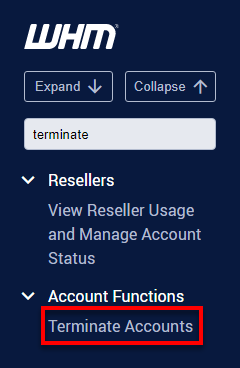
- In the list of accounts, choose the account you want to terminate and click the Remove button.

- When prompted, click Yes, remove this account button to confirm that you want to terminate the account.

- You will be shown a pop-up confirming the account was terminated.
If you need further assistance, feel free to contact us via Chat or Phone:
- Chat Support - While on our website, you should see a CHAT bubble in the bottom right-hand corner of the page. Click anywhere on the bubble to begin a chat session.
- Phone Support -
- US: 888-401-4678
- International: +1 801-765-9400
You may also refer to our Knowledge Base articles to help answer common questions and guide you through various setup, configuration, and troubleshooting steps.
